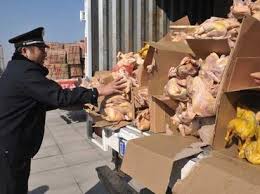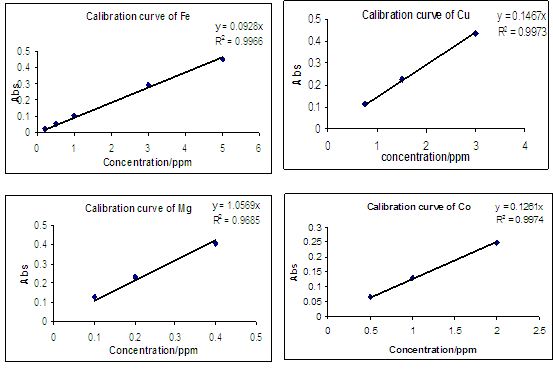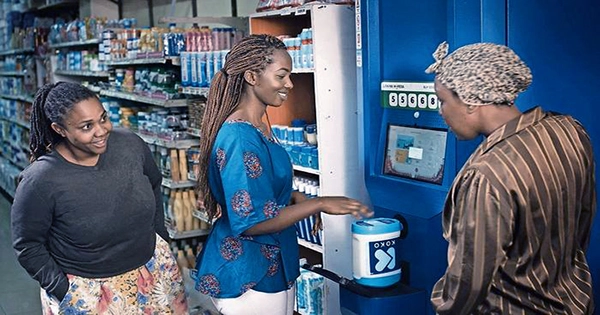Foods of animal origin, including meat, organ meat, meat product and egg are important in human diet in many parts of the world. These foodstuffs are also consumed largely by the general people of Bangladesh for having sufficient proteins, amino acids, lipids, minerals and vitamins. The amino acid of meat protein is very good for the maintenance and growth of human tissue. Although, most organ meats may be high on cholesterol, they also contain good amounts of vitamin A, vitamin B12, niacin and minerals. Liver, kidney, spleen etc. of animal are the detoxifying organs and are the accumulator of different metals. Organ meats are used as a main ingredient of meat products, as a result organ meat and meat products may contain high amount of the metals. Eggs are consumed largely to fulfill the protein deficiency of human body as it is cheaper than other products. Moreover, the major constituents of proteins and lipids in egg play an important role in cosmetic formulation and food processing industry and they also act as bioactive compounds in pharmaceutical products. Though meat, meat product, and egg are important sources of nutrition for human body, it is crucial to estimate the levels of concentration of the essential and toxic metals in these foodstuffs. These are foodstuffs, in which the toxic metals may be included from many ways e.g. the animal feed, drinking water and processing. As a result these foods may contain considerable amount of hazardous impurities including toxic metals and excessive concentrations of iron, copper, magnesium, zinc or cobalt.
Growing concern about the quality of foods has initiated numerous investigations on the presence of essential and toxic metals in meat, organ meat, meat products and eggs in different countries. For example, many researchers determined the concentrations of the toxic metals that were in the ranges : meats (Pb : 0.001-1.81 mg kg-1, Cd : 0.02-0.7 mg kg-1, As : 0.005-0.17 mg kg-1, Cr: 0.37-1.18 mg kg-1, Ni : 2.5 mg kg-1) , organ meats (Pb : 0.1-20 mg kg-1, Cd: 0.06-1.93 mg kg-1, As : 0.046-0.31 mg kg-1, Cr: 0.44-3.62 mg kg-1, Ni : 0.01–0.55 mg kg-1), meat products (Pb: 3.16-9.12 mg kg-1, As: 0.05-0.76 mg kg-1, Cr : 0.11-0.68 mg kg-1) and eggs (Pb: 0.001-0.2 mg kg-1, As: 0.004 mg kg-1, Cr: 0.05 mg kg-1, Ni : 0.2 mg kg-1). On going research in this field is very limited in Bangladesh. For these reasons, a little information is available about the safety of the foodstuffs in respect to toxic metal contamination. In order to minimize the quantity of toxic metals in food, it is necessary to determine the concentrations for making laws and regulations. On the other hand, the essential metals which should be present in the human body within defined level, the determination of their concentrations are also important.
Therefore, the objective of this portion of work is to estimate the levels of toxic metals such as Pb, Cd, As, Cr and Ni as well as essential metals such as Fe, Cu, Mg, Co and Zn in meat, organ meat, meat product and egg. The levels of investigated metals are compared with the literature values and recommended levels by the international organization.
Experimental
Sampling
The samples of meat (local cow, Indian cow, buffalo, goat, local hen and firm hen), organ meat (tongue, lung, liver, spleen, and heart) of cow and buffalo, meat product (chicken burger, chicken samucha, anthon, chicken patties, chicken sandwich, beef pizza, hot dog, beef roll, chicken roll, and chicken wing) and egg (egg of local hen, firm hen and duck) were collected for analysis. Meat and organ meat samples were collected randomly from six different market of Chittagong city area. In the same manner the same meat samples were collected from Comilla city area. Samples of meat product were collected randomly from six different fast food shop of Chittagong city area. Meat products are usually retailed, so their origin could be varying diversified in the different shops. Each sample was made up by 6 same individual samples of different markets for analysis. Three egg samples were collected from Chittagong city area. Yolk and white portion of an egg were analyzed separately. A total of thirty five samples were analyzed for Fe, Cu, Mg, Co, Zn, Pb, Cd, Cr, Ni and As concentrations.
Sample preparation and digestion
The meat and organ meat samples were cut into small pieces by a sharp stainless steel knife and took only the solid flesh. The solid flesh samples were washed with distilled water repeatedly to remove the blood and other unwanted particles. The washed and clean samples were dried at room temperature for 10 hours and ready for digestion. Fresh meat products were collected from market and were digested. Weighed dried samples (meat, organ meat and meat product) (20–25 g) were taken in a three neck round bottom flask and 30 mL of RD H2O was added with the sample. These were boiled for about four hours and then evaporated the solvent. At room temperature, 60 mL of HNO3 and HClO4 (5:1: v/v) mixture were added to the boiled sample. This was refluxed at 120-125 0C (20 hours) until a clear and colorless solution appeared. The volume of the solution has been reduced to about 30-35 mL by condensation. At room temperature few mL of RD H2O was added and filtered through whatman-40 filter paper into a 100 mL volumetric flask and made up to the mark with RD H2O. The egg sample was boiled first, then removed the hard shell carefully and separated the white portion from the yolk of the egg. The separated portions were digested individually. All the samples solution under the present investigation were prepared in similar manner and stored at room temperature for Spectroscopic measurement. A blank solution was also prepared for each group of sample by using all reagents except the sample.
Calibration curves
The method of preparation of calibration curves for the metals was discussed in chapter two. The concentration of the metals in the sample solutions were determined by using the following calibration curves.
Results and discussion
The amount of some essential metals such as Fe, Cu, Zn, Co and Mg, and some toxic metals such as Pb, Cd, As, Cr and Ni in the meats of some popular animal, meat products (fast foods) and eggs were determined by using AAS method. Content of the same metals in some specific organs of two animals (cow and buffalo) was determined by the same method. In order to obtain the difference (if any) of concentration of the metals in the same popular animal meats of different places, we determined the concentration of the metals in the same animal meat of Chittagong and Comilla. The experimentally determined amounts of the metals in the aforementioned samples are shown in Table 3.1, Table 3.2, Table 3.3, Table 3.4, Table 3.5, Table 3.6, Table 3.7 and Table 3.8, respectively. Triplicate measurements of the metals were taken from digested sample solution. Their mean values and the standard deviation (SD) are given in the Tables. The measured values of the metals in the investigation were compared with the literature data of the same foodstuffs of other parts of the world and the recommended daily allowance or the maximum permissible limits of the metals. The average concentration of the metals in the studied foods was calculated and the values are compared with the maximum permissible limits of these metals.
Essential metals
The concentrations of Fe, Cu, Co, Zn and Mg in the investigated samples were as follows: 11-623, 0.15-165, 0.01-48, 15-295 and 16-1372 mg kg-1, respectively (Table 3.1, Table 3.2, Table 3.3 and Table 3.4). The results indicated a wide variation of these metals content in the investigated samples.
Iron
About 80% of the investigated meat products of Chittagong contained iron above the permissible limits (50-140 mg kg-1). While, the concentration of iron in all organ meat, egg and most of meat samples was within the permissible limits. The amount of iron in meat of cattle of Spain and meat (beef, mutton and chicken) of Pakistan was 56, 585-700 mg kg-1, respectively and that in the liver and kidney of cattle of Nigeria was in the range of 2.64–85.60 mg kg-1 [24, 25]. The results of Fe of the foods showed that the content of Fe in the samples was lower than the concentration of Fe in meat samples of Pakistan but resembled with the other reported value. The recommended daily allowance (RDA) of Fe is 10–15 mg day-1 for an adult [26]. Therefore, these foodstuffs are the plenty sources of iron with few exception.
Copper
The concentration of Cu was found higher in some meat products (97-165 mg kg-1) (Table 3.3) as compared to the maximum permissible level of Cu in foods (10-30 mg kg–1) [27, 28] but the eggs and some of organ meat contained lower amount of Cu (0.15-0.81 mg kg-1) (Table 3.2 and Table 3.4). Rest of the sample contained adequate level of Cu compared to the maximum permissible limit of Cu in foods. The amount of copper in the liver and kidney of cattle of Nigeria ranged 0.11–8.99 mg kg-1 [24]. Mariam et al. reported that beef, mutton and poultry meat of Lahore of Pakistan contained 81.51, 5.01 and 12.86 mg kg-1 of Cu, respectively. This reported value of Cu was higher than our findings. Therefore, the study showed that most of the meat, organ meat and egg samples contained the copper within the permissible limit but some of meat products had alarming level of copper as iron. For an example, Anthon, Hot dog, Beef roll, Chicken roll and Chicken wing of meat product contained high level of Cu. Perhaps, the reasons for high content of the iron and copper in the meat products are the cooking materials of fast foods and the ingredient of the foods. The cooking materials are made of Fe, Cu and Ni alloys. For the reason, it might have chance leaching out of some iron and copper from the utensils to the fast foods. Moreover, the reason of the presence of higher amount of Fe in meat product is that meat, organ meat, rice and wheat are the main ingredients of the meat products and these are enriched sources of iron. From this consideration, it may be said that these fast foods should not be taken frequently because the excess amount of these metals from the foodstuffs would be accumulated in different target organs of human body. Although, trace amount of Fe and Cu are essential for body but can be toxic when they exceed the RDA limits of the metals (RDA of Cu is 2–3 mg day-1).
Cobalt
Results of meat products indicated that only beef roll contained exceptionally higher amount of Co (48.3 mg kg-1). The actual source of this metal in this product is not known. The concentrations range of Co in other studied samples was 0.01-5.13 mg kg-1 which within the maximum permissible limit of Co (3.5 mg kg-1) except heart of Cow (5.13 mg kg-1) (Table 3.2) [30]. Liver, kidney and lung of cow of Nigeria contained the Co within the range of 2.9 to 8.8 mg kg-1 [31]. International Atomic Energy Agency (IAEA) reported that Co is widely distributed in the animal organ of liver, kidney and spleen and the concentration of the metal is generally 0.10–0.25 mg kg-1 [28]. The Co concentration in the studied samples including organ meat was more close to the reported value and the IAEA report. An excess of cobalt in body is toxic but the body needs a small amount (1–1.5 mg day-1) of cobalt.
Zinc
Zinc content in the samples studied was within the range of 15-295 mg kg-1. The results also indicated that the concentration of Zn of two animal meats, four organ meats and one meat product exceed the MPL value of the metal in the studied foods. The maximum permissible limit of Zn in food is 50 mg kg-1. But ANZFA set the maximum permissible limit of Zn for meat and poultry is 150 mg kg-1. The concentration of Zn in goat meat of Nigeria was found to be 0 to 417 mg kg-1. The mean concentration of Zn in liver, kidney and muscle of Cattle of Spain was 38.5, 23.0 and 47.0 mg kg-1, respectively. Their reported value resembled to our results. Jozef et al. reported that Zn, As, Pb and Cd can be accumulated in the liver, kidney and spleen of cattle [35]. Mukhacheva and Bezel also found higher levels of Zn in the liver and kidney of goat and cow. The investigation also indicated that the liver, heart and lung of organ meat contained higher level of Zn. The results showed that these foods were good sources of Zn for partial fulfillment of the recommended daily allowance (12-15 mg day-1).
Table 3.1: Amounts (mg kg-1) of essential metals in animal meats
| Location | Meat | Fe Cu Mg Co Zn |
| Chittagong
| Cow (Local) Cow (Indian) Buffalo(Local) Goat (Local) Cock (Local) Cock (Farm)
| 198.55±7.56 11.51±1.35 483.23±10.93 4.0 ±0.06 200.20±0.08 49.53±2.12 2.13±0.72 212.74±7.52 1.0±0.01 43.09±0.02 176.35±8.41 6.01±0.52 522.30±3.23 1.43 ±0.05 135.15 ±0.06 33.43±3.13 3.92±1.62 281.47±3.51 1.28±0.04 82.33±0.05 60.27±5.33 10.33±1.45 649.68±17.32 2.30±0.02 168.7±0.07 22.46±4.53 3.15±1.21 281.86±10.53 2.65±0.03 22.77±0.01
|
| Comilla
| Cow (Local) Cow (Indian) Buffalo(Local) Goat (Local) Cock (Local) Cock (Farm) | 131.69±11.54 1.88±0.55 390.13±13.25 2.87±0.52 152.88±0.04 53.11±6.21 31.78±5.21 260.72 ±11.21 0.04±0.001 77.08±0.002 143.87±5.46 4.47±0.52 472.18±4.23 0.23±0.08 76.92±0.003 27.17±2.2 5.90±1.23 238.62±5.57 BDL 58.28±0.002 16.65±3.45 1.27±1.02 426.96±18.23 0.22±0.04 111.20±0.06 23.85±5.24 1.82±0.63 401.86±20.21 0.84 ±0.001 14.89±0.003
|
Results are mean ± SD of three replicate measurements; BDL: Below detection limit
Table 3.2: Amounts (mg kg-1) of essential metals in the organ meats of cow and
| Animal | Organ | Fe Cu Mg Co Zn |
|
Cow | Tongue Heart Lung Liver Spleen
| 36.75±0.02 0.17±0.03 105.13± 0.05 1.60 ±0.002 41.11±0.001 33.54±0.03 0.54±0.03 81.62±0.002 5.13±0.004 263.64±0.01 99.31±0.01 BDL 82.78±0.01 0.01±0.002 22.47±0.004 99.29±0.02 0.81±0.001 59.65±0.004 1.05±0.003 20.09±0.004 123.3±0.85 0.15±0.05 49.61±1.05 3.28±0.23 29.24±1.21 |
|
Buffalo | Tongue Heart Lung Liver Spleen
| 43.16±0.003 1.71±0.003 81.17±0.002 1.24±0.001 288.46±0.002 56.95±0.03 0.25±0.002 100.5±0.004 3.28±0.001 25.76±0.004 48.98±0.04 1.68±0.005 32.91±0.01 1.75±0.003 295.36±0.006 85.2±0.02 2.44±0.001 16.11±0.006 2.84±0.003 160.76±0.004 100.6±2.35 0.20±0.02 75.75±4.03 2.72±0.41 44.81±2.34
|
buffalo of Chittagong city area
Table 3.3: Amounts (mg kg-1) of essential metals in meat products of Chittagong city area
| Meat products | Fe Cu Mg Co Zn |
| Chicken Burger Chicken Samucha Anthon Chicken Patties Chicken Sandwich Beef Pizza Hot Dog Beef Roll Chicken Roll Chicken Wing | 11.36±0.04 0.91±0.02 27.88±0.03 0 .10±0.001 17.20±0.04 219.44±0.03 7.07±0.05 280.51±0.03 1.05±0.001 34.04±0.02 599.84±0.01 108.56±0.03 454.98±0.03 1.18±0.00.01 284.65±0.02 294.02±0.7 16.90±0.02 355.41±0.04 0.03±0.001 35.76 ±0.2 171.14±0.4 0.75±0.03 332.52±0.6 2.03 ±0.001 18.36±0.03 230.27±0.05 8.27±0.05 341.51±0.4 0.03±0.005 37.85±0.08 172.41±0.3 110.90±0.6 344.02±0.2 0.01±0.001 65.55±0.02 93.47±0.7 165.02±0.8 341.77±0.2 48.3±0.1 112.67±0.3 290.09±0.3 97.28±0.6 332.59±0.2 0.11±0.01 62.03±0.2 623.12±0.9 153.80±0.1 1372.54±0.2 0.04±0.04 138.38±0.2
|
Table 3.4: Amounts (mg kg-1) of essential metals in eggs of Chittagong city area
Egg | Portion | Fe Cu Mg Co Zn |
Hen ( local) | White | 9.48±0.05 0.22±0.003 73.59±0.03 BDL 1.41±0.001 |
| Yolk | 115.1±0.003 0.42±0.003 147.7±0.02 0.77±0.001 102.73±0.2 | |
| Total | 124.58 0.64 221.29 0.77 104.14 | |
Hen ( firm) | White | 2.96±0.08 0.1±0.01 43.26±0.2 BDL 16.88±0.02 |
| Yolk | 27.27±0.3 0.16±0.03 75.96±0.3 1.6±0.01 81.97±0.2 | |
| Total | 30.66 0.26 119.22 1.6 98.85 | |
Duck (local) | White | 32.97±0.03 0.17±0.003 496.5±0.2 BDL 0.61±0.08 |
| Yolk | 11.03±0.07 0.24±0.03 134.3±0.2 4.67±0.1 72.18±0.2
| |
| Total | 44 .0 0.41 630.8 4.67 72.79 | |
Magnesium
The concentration of Mg in most of the samples was found higher (200-1300 mg kg-1) than the other essential metals except organ meats. The RDA of Mg is 300-500 mg day-1 for an adult person [37]. The concentration of Mg in beef (ox), mutton (goat) and chicken of Pakistan was 755–830, 1185–1215 and 1290–1310 mg kg-1, respectively [41]. These reported values were close to our results.
The study revealed that the concentration of the essential metals in the aforementioned foods (except few meat products) are in the range of human necessities on the basis of their recommended daily allowance and the people should not worry about them except in the case where their deficiency produces diseases.
Toxic metals
The concentrations of Pb, Cd, As, Cr and Ni in the investigated samples were as follows: 0.08-43, 0.003-8, 0.004-0.49, 0.02-5.36 and 0.05-41 mg kg-1, respectively (Table 3.5, Table 3.6, Table 3.7 and Table 3.8). The results indicated also a wide variation of these metals content in the same samples.
Lead
The concentration of Pb in animal meats of Chittagong, animal meats of Comilla, organ meat of cow, organ meat of buffalo, meat product (fast foods) and egg were as follows 0.81-42.00, 0.03-43.00, 0.67-16.00, 0.51-7.47, 1.00-4.62 and 0.34-12.00 mg kg-1, respectively (Table 3.5, Table 3.6, Table 3.7 and Table 3.8). Five samples out of 35 contained Pb below the detection limit. The Pb content in six samples (cow local, cock local, cow Indian, lung of cow, tongue of buffalo and egg of local hen) was higher (7.00-43.00 mg kg-1) than the maximum permissible limit (1.00-5.00 mg kg-1) [28], while 23 samples contained the concentration of Pb within the maximum permissible limit. Therefore, 28 samples out of 35 were quite safe from Pb toxicity to human body. The results also indicated that the meat samples of different places showed an unusual variation of metal concentrations. For an example, the highest concentration of Pb was found in meat of local cow and local hen of Chittagong that were 24.9 and 41.94 mg kg-1, respectively, whereas the highest concentration of Pb was found in meat of Indian cow and local goat of Comilla that were 43.37 and 1.36 mg kg-1, respectively (Table 3.5). Possibly, the reasons behind the variation in concentration of same metal in the same sample of different places were the different animal feed, water consumption and environment. Three samples (lung and spleen of cow and tongue of buffalo) of the organ meat of cow and buffalo of Chittagong contained higher level of Pb as compared to the maximum permissible limit of Pb (Table 3.6). Beef roll, chicken wing and beef pizza contained higher amount of Pb among the meat products, their values were 4.62, 3.94, and 2.45 mg kg-1, respectively (Table 3.7) but these were within the maximum permissible limit. The amount of Pb in egg samples was very negligible except egg of local hen (12.1 mg kg-1 of Pb) (Table 3.8). The concentration of Pb in chicken and buffalo meat of Spain was 0.03-0.06 mg kg-1 and in meat of cattle of USA, Canada and Slovenia was 0.12 mg kg-1, 0.67-1.81 mg kg-1, and 0.85 mg kg-1, respectively [9-14]. The concentration of Pb in organ meat (liver, kidney, heart and lung) of cattle of Spain, USA and Palestine was in the range 0.1-4.7 mg kg-1. Meat products and eggs of Slovenia and Spain contained 3.16-9.12 mg kg-1 and 0.02-0.24 mg kg-1 of Pb, respectively. The study showed that few of the meat samples (Table 3.5) contained higher amount of Pb than those studied in abroad. But meat products, eggs and most of the meats were safe to human health.
Table 3.5: Amounts (mg kg-1) of toxic metals in animal meats
| Location | Meat | Pb Cd As Cr Ni |
| Chittagong
| Cow (Local) Cow (Indian) Buffalo(Local) Goat (Local) Cock (Local) Cock (Farm)
| 24.9±0.04 8.04±0.02 0.18 1.22±0.02 2.64±0.01 2.05±0.01 1.57±0.03 0.14 2.55±0.04 BDL 3.06±0.12 0.57±0.04 0.16 5.36±0.01 0.13±0.003 1.35±0.01 0.15±0.01 0.33 0.08±0.03 0.35±0.001 41.94±0.01 5.20±0.02 0.08 0.69±0.01 1.13±0.04 0.81±0.03 0.11±0.01 0.06 BDL 0.72±0.002 |
| Comilla
| Cow (Local) Cow (Indian) Buffalo (Local) Goat (Local) Cock (Local) Cock (Farm) | 0.29±0.05 0.01 0.04 BDL 3.4±0.24 43.37±0.01 0.41±0.01 0.02 0.02 41.4±0.01 0.64±0.08 BDL 0.49 BDL 4.94±0.31 1.36±0.01 0.05±0.01 BDL 0.37±0.002 BDL 0.08±0.002 0.01 BDL BDL BDL 0.03±0.002 BDL 0.01 BDL 0.03±0.002
|
Results are mean ± SD of three replicate measurements
Table 3.6: Amounts (mg kg-1) of toxic metals in the organ meats of cow and buffalo of
Chittagong city area
| Animal | Organ | Pb Cd As Cr Ni |
|
Cow | Tongue Heart Lung Liver Spleen
| 0.75±0.001 BDL 0.01 0.06±0.002 BDL 0.67±0.003 0.06±0.002 0.03 0.86±0.005 1.15±0.003 16.3±0.01 1.12±0.002 0.15 0.10±0.003 BDL 0.72±0.002 0.03±0.001 0.01 BDL BDL 5.5±1.03 0.35±0.04 0.11 0.08±0.03 0.43±0.25
|
|
Buffalo | Tongue Heart Lung Liver Spleen
| 7.47±0.004 0.75±0.005 0.08 0.71±0.002 BDL 0.51±0.002 0.25±0.001 BDL BDL BDL 4.7±0.001 0.44±0.005 0.07 0.44±0.003 0.05±0.002 0.98±0.002 0.15±0.001 BDL 0.93±0.001 0.64±0.002 4.53±1.24 0.25±0.003 BDL 1.57±0.6 0.17±0.03
|
Table 3.7: Amounts (mg kg-1) of toxic metals in meat products of Chittagong city area
| Meat products | Pb Cd As Cr Ni |
| Chicken Burger Chicken Samucha Anthon Chicken Patties Chicken Sandwich Beef Pizza Hot Dog Beef Roll Chicken Roll Chicken Wing | BDL 0.006±0.05 0.01 4.15±0.02 BDL 1.46±0.07 0.003±0.002 0.004 3.76±0.02 1.75±0.03 BDL 0.14±0.05 0.008 3.91±0.02 4.85±0.04 BDL 0.23±0.04 0.008 4.33±0.05 3.72±0.002 BDL 0.20±0.04 BDL 3.23±0.002 BDL 2.45±0.004 0.006±0.005 BDL 2.89±0.007 BDL 1.01±0.08 0.009±0.005 BDL 3.05±0.002 0.49±0.001 4.62±0.4 0.003±0.005 2.73 BDL 2.73±0.08 BDL 0.016±0.5 BDL BDL 0.23±0.03 3.94±0.5 0.021±0.8 BDL BDL 2.68±0.02
|
Table 3.8: Amounts (mg kg-1) of toxic metals in eggs of Chittagong city area
Egg | Portion | Pb Cd As Cr Ni |
Hen ( local) | White | 0.3±0.002 0.05±0.004 BDL BDL BDL
|
| Yolk | 11.8±0.004 0.99±0.005 BDL BDL 4.26±0.002
| |
| Total | 12.1 1.04 BDL BDL 4.26 | |
Hen ( firm) | White | 1.06±0.004 BDL BDL BDL 12.81±0.7 |
| Yolk | BDL 0.08±0.005 BDL BDL 2.79±0.004 | |
| Total | 1.06 0.08 BDL BDL 15.6 | |
Duck (local) | White | 0.32±0.04 BDL BDL BDL BDL |
| Yolk | 0.02±0.04 0.064±0.003 BDL 0.02±0.006 0.59±0.05
| |
| Total | 0.34 0.064 BDL 0.02 0.59 | |
Cadmium
The concentrations of Cd in animal meat of Chittagong, animal meat of Comilla, organ meat of cow and organ meat of buffalo were in the ranges 0.11-8.04, 0.01-0.41, 0.03-1.12 and 0.15-0.75 mg kg-1, respectively (Table 3.5 and Table 3.6). Meat product and egg contained 0.003-0.23 and 0.06-1.04 mg kg-1 of Cd, respectively (Table 3.7 and Table 3.8). Only one sample (tongue of cow) contained Cd below the detection limit. Among the thirty five samples only six samples e.g. meat of local cow, meat of Indian cow and meat of local cock of Chittagong, lung of cow and tongue of buffalo carried excess amount of Cd than the maximum permissible limit of Cd of the foodstuffs (0.2 and 0.5 mg kg-1 for meat and organ meat, respectively). Therefore, the study showed that 29 samples out of 35 were free from Cd contamination or the concentration of metal was within permissible limit in the samples. Though, the foodstuffs in the study which contained slightly higher amount of Cd were not threat to human body for Cd toxicity because the consumption of the foods was limited and these were not taken regularly. As a result, the consumers are not being worried about the foods in terms of Cd content. The amount of Cd in the meat of lambs, canned beef and meat pies of Australia, Poland, Ireland and Germany was in the range 0.03-0.07 mg kg-1 and that in liver, kidney of lamb, cattle and boiler chicken was within the range 0.06-1.93 mg kg-1. The literature value of Cd for the foodstuffs indicated that most of the studied meats and organ meats contained the Cd level as the concentration found in other countries.
Arsenic
The concentration of arsenic in meat, organ meat and meat products was found to be 0.01-0.49, 0.01-0.15 and 0.004-2.75 mg kg-1, respectively [Table 3.5, Table 3.6 and Table 3.7]. The metal (As) was undetectable in 13 samples including three eggs out of 35 as the concentration of the metal was below the detection limit. The results indicated that the concentration of As in the samples was within the MPL of As for the foodstuffs (1 mg kg-1) and these foods were not harmful for human health in terms of arsenic toxicity as well as the maximum tolerable intake (0.7 mg day-1). Only beef pizza of meat product contained higher level of arsenic (2.75 mg kg-1) compared to the MPL value of As. The arsenic concentration in the meat of cow and chicken, liver and heart of cow, meat products and eggs of Africa was within the range 0.005-0.1, 0.05-0.17, 0.05-0.76 and 0.31 mg kg-1, respectively. The present study showed that the concentration of arsenic in the investigated samples of meat, organ meat, meat product and egg was lower than those published in different international journals.
Chromium
The concentration of Cr in meat, organ meat and meat product were in the ranges of 0.02-5.36, 0.06-1.57 and 2.89-4.33 mg kg-1, respectively (Table 3.5, Table 3.6 and Table 3.7). Egg contained very negligible amount of Cr (Table 3.8). Twelve samples out of 35 contained chromium below the detection limit. The Cr concentration in meat and organ meat (liver, heart and lung) of cattle, goat and poultry of Slovenia and Palestine was in the range 0.44-3.62 mg kg-1. The eggs of hen of Slovenia contained 0.05 mg kg-1 of chromium. The concentration of Cr in meat products of Africa was 0.11-0.68 mg kg-1. The literature survey and the investigation showed that the concentration of Cr was lower in meat, organ meat and egg but slightly higher in meat products than those studied in abroad. Therefore, if these fast foods were taken frequently by a person then few Cr might have chance to be accumulated into the target organ of human body. As a result, peoples are requested to take a small amount of the fast foods at certain interval. After all, the content of Cr in the studied samples was within the maximum permissible limit (20 mg kg-1) and human body require a very small amount of Cr (0.06 mg per day). It should be mentioned that Cr (III) and Cr (VI) remain in equilibrium in human body. Here we determined the amount of total Chromium [Cr (III) + Cr (VI)]. So it is uncertain how much of Cr (VI) and Cr (III) were present separately in the studied samples. However, based on the value of MPL (20 mg kg-1) of Cr in foods it can be said that the investigated samples were harmless to health.
Nickel
The Tables 3.5, 3.6, 3.7 and 3.8 indicated that the Ni content in meat, organ meat, meat product and egg was 0.03-41, 0.05-1.15, 0.23-4.85 and 0.59-15.6 mg kg-1, respectively. Nine samples out of 35 contained Ni below the detection limit but only two samples possessed excess amount of Ni than the MPL of Ni (1 to 5 mg kg-1). These two samples (meat of Indian cow of Comilla, 41.4 mg kg-1 and egg of firm hen of Chittagong, 15.6 mg kg-1) contained exceptionally higher amount of Ni and the real causes of the excess amount of Ni in the samples is not known to us (Table 3.5 and Table 3.8). Therefore, these samples were not safe to public health since these contained alarming levels of Ni than the permissible limit. Moreover, meat of buffalo of Comilla (4.94 mg kg-1), meat of local cow (3.4 mg kg-1) of Comilla (Table 3.5), egg of local hen (4.26 mg kg-1) (Table 3.8) and Anthon (4.85 mg kg-1), chicken patties (3.72 mg kg-1), beef roll (2.73 mg kg-1), chicken wing (2.68 mg kg-1) of meat product (Table 3.7) contained elevated amount of Ni. As a result, the average concentration of Ni in meat, meat product and egg were significantly higher as compared to the MPL value of Ni for foods. Though, Ni content in 33 samples out of 35 was within permissible limits and was safe from the Ni toxicity to human body. The individual result of nickel in the foodstuffs indicated that these foods were safe for human body except meat of Indian cow of Comilla and egg of firm hen of Chittagong. The concentration of Ni in liver, kidney and meat of cattle and poultry of Nigeria was ranged 0.45 to 4.11 mg kg-1 [46]. Another group of researcher of Nigeria found 0.01 to 1.37 mg kg-1 of Ni in meat and meat products of Nigeria. Their results were similar to our findings except meat of Indian cow of Comilla and egg of firm’s hen of Chittagong.
Comparative study
This investigation revealed that five samples (meat of Indian cow of Comilla, meat of local cow and cock of Chittagong, tongue of buffalo and lunge of cow of Chittagong) were contaminated by Pb, Cd and Ni (Table 3.5 and Table 3.6). Egg of local hen and egg of firm hen contained also higher amount of Pb and Ni, respectively as compared to the maximum permissible limit of these metals (Table 3.8). But the concentration of Cr and As were within the permissible limit in all the investigated samples except beef roll of meat product. Therefore, twenty eight samples out of thirty five were free from all kind of toxic metal contamination and were safe for human consumption.
The data showed that few meat and meat products contain significantly higher level of the metals. Generally contamination of the foodstuffs depends on the nature and age of animal, place of animal, dietary habits, slaughtering, transportation condition and exposure time to dust etc. However, proper covering of meat at shop can reduce up to 90% of contamination from open air. Further, washing of meat by fresh water also remove the deposited contamination to some extant. Therefore, the following recommendations may be useful for ensuring improved safety:
(i) The places where the animal live must be clean and should be fed pure food and water.
(ii) The slaughter places should be cleaned and washed daily.
(iii) The slaughtered meat must be covered with suitable cloth or paper in the
designated shop.
(iv) Fresh meat should be preferred and healthy animals examined by the
professionals must be slaughtered and
(v) Washing before use of knives can reduce superficially deposited contamination.
Conclusion
In view of the experimental results of the metal determination in meat, organ meat, meat product and egg, it is revealed that these foodstuffs were good sources of macro and micro nutrients with few exceptions. Important information is that all the studied samples in the foodstuffs were safe from arsenic and chromium contamination except only one fast food item of beef roll. But Pb, Cd and Ni were found in higher level in few samples. Therefore, these food items should be avoided as much as possible. But rests of the investigated foods are safe considering the recommended daily allowance or maximum permissible limit of the concerned metals. This study also provided a baseline data on toxic metals as well as essential metals in the foodstuffs of the region of Bangladesh. Extensive research is in progress that would provide the real scenario of the contamination level of the foods and the degree of pollution of the environment.


















